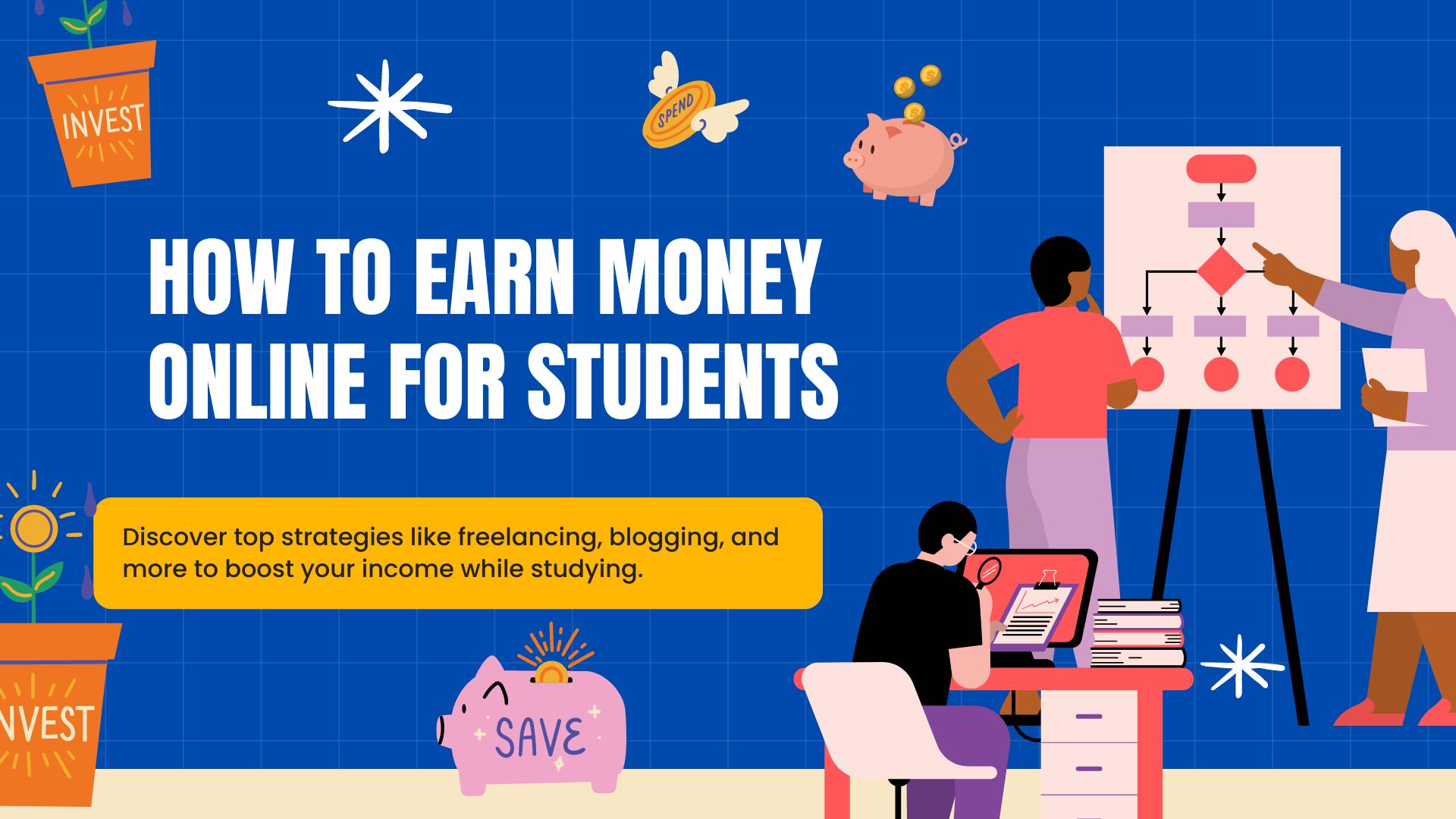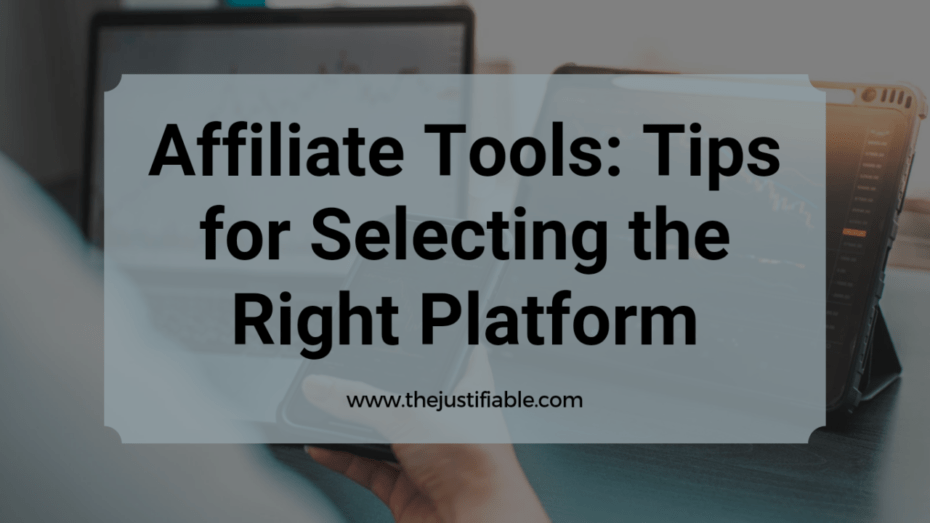Table of Contents
Looking for money making strategies that actually work—without chaining you to a desk? Want to earn while you sleep, travel, or focus on what matters most?
What if you could set up simple systems today that keep paying you month after month, with little to no daily effort?
In this guide, I’ll walk you through seven smart ways to build passive income streams that don’t rely on get-rich-quick gimmicks. Whether you’re starting with zero or looking to scale what you already have, these strategies will help you make money while living life on your own terms.
1. Build and Monetize a Niche Blog That Generates Traffic
Starting a blog is one of the most beginner-friendly money making strategies. With the right niche, quality content, and smart monetization, you can turn your blog into a passive income machine that keeps paying you month after month.
Choose a Profitable Niche With Long-Term Search Potential
The foundation of a successful blog starts with choosing the right niche. It’s tempting to chase trends, but the goal here is stability—not just traffic spikes. You want a niche that people are always searching for, not something that fades in a year.
Here’s how you can narrow it down:
- Look for niches that solve a consistent problem (e.g., personal finance, fitness, parenting).
- Use tools like Google Trends or Ubersuggest to check long-term interest.
- Validate the niche by checking existing blogs, forums, and monetization options.
- Ask yourself: “Will this still matter five years from now?”
In my experience, evergreen niches like health, money, relationships, or skill-building tend to hold up well over time. It’s not just about what’s profitable—it’s also about what you can talk about consistently without burning out.
Create Evergreen Content That Ranks and Converts
Not all blog posts are created equal. If you want to generate passive income, your blog needs content that brings in traffic long after you hit publish. That’s where evergreen content comes in.
Evergreen content stays relevant, answers specific questions, and builds authority over time. Great examples include how-to guides, reviews, tutorials, and list posts.
What works well:
- “How to Start a Freelance Writing Business”
- “Best Budgeting Apps for Beginners”
- “SEO Checklist for New Bloggers”
Before writing, use keyword research tools like Ahrefs, KeySearch, or Google’s Keyword Planner to find high-volume, low-competition keywords. Then optimize for search intent, add helpful visuals, and include a clear call-to-action.
The more useful your content is, the longer it stays relevant—and the more money it can make.
Monetize With Affiliate Links, Ads, and Digital Products
Once your blog gains some traction, it’s time to make it work for you. Monetization isn’t just slapping ads everywhere. It’s about aligning your content with offers that solve real problems for your readers.
Here are three effective ways to earn passively:
- Affiliate marketing: Recommend tools or products you trust and earn a commission. For example, share a tutorial on using Canva and include your referral link.
- Display ads: Join networks like Monetag or Adsterra once you have steady traffic.
- Digital products: Sell your own ebooks, templates, or mini-courses that complement your blog content.
The magic happens when you blend all three—helpful content that earns affiliate commissions, brings in ad revenue, and sells your own creations.
Use SEO and Pinterest to Drive Consistent Traffic
Traffic is what turns a blog from a hobby into a money-making strategy. You don’t need to be everywhere—just smart about where you focus.
Search engines and Pinterest are two of the most powerful channels for passive blog traffic. Unlike social media, they keep delivering visitors long after your post goes live.
Here’s how to approach both:
- For SEO: Target one main keyword per post, use internal links, write detailed content, and optimize your title/meta description.
- For Pinterest: Create vertical pins using Canva, write keyword-rich descriptions, and join niche group boards for added reach.
That’s the beauty of compounding traffic. One good post can quietly become a long-term income stream.
2. Invest in Dividend Stocks for Monthly Cash Flow

If you’re looking for money making strategies that require little maintenance, dividend investing deserves a spot on your radar. It’s one of the most time-tested ways to earn consistent, hands-off income without constant hustle.
Pick Reliable, High-Yield Dividend Stocks
The key here isn’t chasing the highest yield—it’s choosing companies with strong fundamentals and a proven track record of paying (and increasing) dividends over time.
Here’s what to look for in a dividend stock:
- Dividend yield between 2% and 5%
- Dividend payout ratio under 70%
- History of at least 5–10 years of consistent payments
- Strong brand and business model (think Johnson & Johnson, Coca-Cola, or Procter & Gamble)
Use platforms like Robinhood or Dividend.com to find dividend aristocrats—companies that have increased dividends every year for at least 25 years.
Dividend investing isn’t about fast results, but it’s remarkably reliable for building long-term wealth.
Use DRIP (Dividend Reinvestment Plans) to Accelerate Growth
If you’re not relying on dividend income just yet, reinvesting those payments can dramatically speed up your portfolio’s growth.
With DRIP, your dividends are used to automatically purchase more shares—without any extra effort from you. This means every payment increases your future earnings, creating a compounding snowball.
For example:
- You invest $10,000 in a stock yielding 4%
- That earns $400/year in dividends
- Reinvested, your balance grows faster—and over 20 years, it can double your returns
Most brokerages offer DRIP at no extra cost. It’s a quiet, effective way to build wealth on autopilot.
Automate Contributions With Brokerage Platforms
Staying consistent is easier when it’s automated. Use platforms like Vanguard, Fidelity, M1 Finance, or Charles Schwab to schedule monthly contributions into your dividend portfolio.
Here’s how I set it up:
- $500/month auto-transferred from checking
- Invested across 5–10 dividend stocks or ETFs
- Reinvest dividends through DRIP
Even if you’re starting with $100/month, what matters most is momentum. Over time, those small amounts grow into something meaningful.
Track ROI With Tools Like Simply Safe Dividends
Once your portfolio grows, keeping track of income and performance is essential. Tools like Simply Safe Dividends give you a snapshot of how much you’re earning, how safe your dividends are, and whether you’re on track.
Features I find helpful:
- Dividend safety score
- Portfolio income forecast
- Upcoming payment calendar
- Alerts for dividend cuts or increases
It’s worth the $399/year (or $99/quarter) if you’re serious about passive income from dividends. You can also try alternatives like TrackYourDividends or use a custom spreadsheet if you’re just getting started.
Pro tip: Focus on stability, not just growth. A slow and steady dividend strategy can outperform flashier investments—without the emotional rollercoaster.
3. Sell Digital Products With No Inventory Required
Selling digital products is one of the most scalable money making strategies out there. With no shipping, storage, or physical costs, you can build a product once and sell it over and over again—even while you sleep.
Create and Market Ebooks, Templates, or Printables
The key to success here is simplicity and usefulness. Digital products should solve a specific problem or help people reach a goal faster. Some of the easiest formats to start with include:
- Ebooks (e.g., “How to Start Freelancing in 30 Days”)
- Templates (like Notion planners, resume formats, or content calendars)
- Printables (checklists, budget trackers, kids’ activity sheets)
Start by identifying a niche pain point you can solve. For example, a blogger could sell a blog post planner or a beginner SEO checklist. Use Canva or Google Docs to design your first product—no fancy tools needed.
Before launching, test your idea with your audience (if you have one) or look at existing Etsy listings, Gumroad shops, and Reddit forums to confirm demand.
Set Up an Automated Sales Funnel Using Gumroad or Payhip
Once your product is ready, you’ll need a place to sell it. Platforms like Gumroad and Payhip make the process painless. Both allow you to:
- Host your product
- Accept payments
- Deliver files automatically
- Track analytics
What I like about Gumroad:
- No upfront cost (they take a percentage of each sale)
- Customizable product pages
- Simple checkout process
- Email list building built in
To automate your funnel:
- Create a lead magnet (like a free checklist)
- Use a tool like MailerLite or Aweber to deliver it
- Nurture leads with a short email sequence
- Pitch your product naturally at the end of the sequence
It doesn’t have to be complicated. A 3–5 email sequence can bring in passive sales for months.
Promote With SEO, Pinterest, and Email Marketing
Getting eyes on your product is where many people stall. But you don’t need to go viral—you just need consistent visibility in the right places.
Here’s what works well:
- SEO: Write blog posts targeting long-tail keywords related to your product. For example, “Best Budget Printables for Single Moms” could rank well and promote your Etsy listing or Gumroad shop.
- Pinterest: It acts more like a search engine than a social platform. Create eye-catching vertical pins using Canva. Focus on keywords in pin descriptions.
- Email: If you’re building a list, send helpful content weekly and occasionally share your product as a natural solution.
A small, engaged list of 500 subscribers can often convert better than 5,000 random social media followers.
Bundle Products to Increase Order Value
One overlooked way to boost income from digital products is bundling. Rather than selling a single template for $7, consider offering a $25 bundle that includes five different tools.
Bundling works because:
- It feels like more value to the customer
- It helps you stand out from similar low-cost products
- It increases your average order value, meaning you earn more per sale
Example bundle ideas:
- “Blog Starter Kit”: Includes a niche planner, content calendar, SEO checklist, and affiliate tracking sheet
- “Finance Bundle”: Budget tracker, debt payoff planner, and emergency fund worksheet
This approach not only drives more revenue—it positions you as a more comprehensive solution.
4. Launch a Profitable Print-On-Demand Store
If you want a low-risk ecommerce model with almost zero inventory hassle, print-on-demand (POD) is one of the most practical money making strategies you can try. You upload a design once, and the provider handles printing, packing, and shipping.
Choose a Print Provider Like Printful or Gelato
Your POD provider is the backbone of your store. You want reliability, quality, and fast shipping.
Two of the most trusted platforms are:
- Printful: Integrates with Shopify, Etsy, and WooCommerce. Known for product quality and branding options.
- Gelato: Great for global reach and fast delivery with local production partners. Especially strong in Europe.
Compare fulfillment locations, product catalog, shipping times, and branding options before you choose. In my experience, Printful is better for US-based sellers while Gelato excels internationally.
Design Evergreen Apparel or Gifts With Canva or Kittl
Great designs drive POD sales. You don’t need to be a professional artist—you just need to solve a “gift problem” or appeal to a niche.
Use free tools like:
- Canva: For simple, text-based designs (quotes, slogans, minimal graphics)
- Kittl: For vintage-style t-shirts, more detailed graphics, and a designer-friendly interface
Focus on designs that are:
- Timeless (not tied to current trends)
- Niche-specific (cat lovers, teachers, plant parents, etc.)
- Giftable (birthday, retirement, graduation)
Avoid generic messages and overused clip art. You want something that makes someone say: “That’s so me.”
Connect to Shopify or Etsy for Sales Automation
You’ll need a storefront to process sales and showcase products. Most POD sellers start on:
- Etsy: Lower startup cost, built-in traffic, ideal for handmade or unique designs
- Shopify: Fully customizable, better long-term control, requires more setup
Either one works well with POD platforms. Once integrated, the process becomes almost fully automated:
- Customer places an order
- Order is sent to Printful or Gelato
- They print and ship it
- You get paid
This hands-off model allows you to scale your income without managing inventory.
Optimize Listings With Keywords That Convert
Just like blogging or Pinterest, search visibility is crucial. Your listings need to speak your customer’s language—not just describe the product.
Use Etsy’s search bar or tools like eRank to identify what shoppers are typing. Then naturally include those terms in:
- Product titles (e.g., “Funny Cat Mom Mug – Gift for Cat Lovers”)
- Descriptions (mention how, when, or why someone would use the product)
- Tags and categories (fill all available slots with relevant terms)
Also, include lifestyle photos and mockups. Printful has a free mockup generator, or you can grab styled images from Placeit. Better images lead to more clicks—and more clicks often lead to sales.
Pro tip: Test different price points, titles, and designs. Even small tweaks can double your conversion rate over time.
5. Create an Evergreen Online Course or Workshop

If you have knowledge others are willing to pay for, creating an online course can be one of the most rewarding money making strategies. Once built, it can become a steady source of passive income for months—or even years.
Validate a Profitable Topic From Your Expertise
The biggest mistake people make with online courses is building something no one actually wants. Start by validating your idea before recording a single lesson.
Here’s a simple process to find a profitable course topic:
- Identify what people already ask you for help with (this is a huge signal).
- Look at Facebook groups, Quora, and Reddit for repeated questions in your area of expertise.
- Use tools like AnswerThePublic or Ubersuggest to find what people are searching for.
- Survey your email list or social audience to find what they struggle with.
You don’t need to be a world-class expert—you just need to be a few steps ahead of your ideal student. And focus on outcomes, not information. What problem does your course solve?
Host It on Platforms Like Teachable or Thinkific
Once your topic is clear, the next step is getting it online. Platforms like Teachable and Thinkific are designed for creators who want a streamlined setup without tech overwhelm.
Both platforms allow you to:
- Upload video, audio, or PDF lessons
- Drip content over time
- Offer quizzes, certificates, and discussion areas
- Accept payments globally
Teachable is often preferred for simplicity, while Thinkific gives you more design flexibility. If you want to start free, both offer no-cost starter plans with limited features.
You can also explore alternatives like Podia (great for bundled digital products) or Kajabi (all-in-one for high-ticket courses).
Use Email Funnels to Sell on Autopilot
Now comes the part that turns your course into a passive income asset—automated email funnels. These are sequences that deliver value, build trust, and offer your course at the right time.
A simple 5-part email funnel might look like this:
- Welcome & Quick Win – Share something helpful and actionable
- Tell Your Story – Why you created the course
- Address a Pain Point – What happens if they don’t solve this?
- Offer the Solution – Introduce your course
- Urgency or Bonus – Time-sensitive bonus or limited offer
Use tools like ConvertKit, MailerLite, or Systeme.io to set this up. One-time effort, long-term results.
Pro tip: Send one of these emails weekly to stay top of mind without overwhelming people.
Repurpose Content Into Mini Offers or Upsells
A full course doesn’t have to be your only offer. You can slice your content into smaller, more focused products like:
- Mini-courses (2–3 lessons on a specific result)
- Workbooks or swipe files
- Private coaching or group Q&A add-ons
- VIP upgrades with 1-on-1 feedback
This lets you meet people at different price points and maximize your earning potential from one core idea.
For example, if you have a $199 course on podcasting, you could offer a $39 starter kit and a $499 premium package with templates and personal reviews.
The goal is to create a product ecosystem that works together—without reinventing the wheel.
6. License Your Photos, Videos, or Music for Royalties
If you have creative work just sitting on your hard drive, you could turn it into passive income by licensing it. This approach isn’t about going viral—it’s about building a catalog that quietly earns over time.
Submit Content to Marketplaces Like Shutterstock or Pond5
To start earning royalties, you’ll need to submit your media to platforms that match buyers with contributors. The most beginner-friendly include:
- Shutterstock: Ideal for photos, vectors, and footage
- Pond5: Great for video clips and sound effects
- Adobe Stock: Integrates directly with Adobe Creative Cloud
- AudioJungle: Focused on music and audio assets
Each platform has its own rules and submission process. Focus on quality, clear composition, and originality. The more platforms you submit to, the broader your reach.
Focus on High-Demand, Low-Competition Categories
Generic content tends to get buried. If you want your media to stand out, look for niches with demand but lower saturation.
Examples include:
- Workplace diversity images (realistic office environments)
- Drone footage of lesser-known locations
- Ambient nature soundscapes
- DIY process videos (e.g., hand mixing resin, packaging soap)
You can research trends on each platform or use tools like Google Trends, Treendly, or even YouTube auto-suggestions to spot opportunities.
The real key is consistency—upload 5–10 high-quality pieces each week, and the results will build up over time.
Use Metadata and Tags to Increase Discoverability
Your media won’t sell if no one can find it. That’s where metadata (titles, tags, and descriptions) becomes crucial.
Tips for better visibility:
- Write titles that describe exactly what’s in the file
- Use 30–50 relevant tags (think: mood, theme, subject, setting)
- Add descriptions that include context (e.g., “Happy couple walking through autumn leaves in a park”)
Check out what top sellers are doing and reverse-engineer their style. The better your metadata, the more search engines will show your work to buyers.
Batch Upload to Scale Passive Earnings Over Time
Instead of uploading one file at a time, create in batches. This not only speeds up your workflow but also gives you a chance to dominate a niche with a full collection.
Here’s a basic batching system:
- Pick a theme or keyword (e.g., “small business,” “urban gardening”)
- Create 10–20 variations (different angles, formats, moods)
- Upload all variations with optimized metadata
Tracking tools like Wirestock (which auto-submits to multiple agencies) can help streamline the process. Over time, even modest royalties—like $2 or $5 per sale—can stack up across hundreds of files.
7. Automate Affiliate Marketing With Content and Funnels
Affiliate marketing is one of the most flexible money making strategies—and with automation, it can become a passive powerhouse. Instead of trading time for money, you earn commissions by recommending tools, services, or products others are already looking for.
Choose Recurring Affiliate Programs That Pay Monthly
Recurring programs are your best bet for long-term income. Instead of earning once per sale, you get paid monthly as long as your referral keeps using the product.
Top examples include:
- ConvertKit (email marketing for creators)
- Systeme.io (funnels and automation)
- Skillshare (online learning)
- Web hosting like Hostgator or Hostinger
Look for programs that offer:
- 20%–50% recurring commission
- Reliable tracking and reporting
- Long cookie durations (30 days or more)
Choose products you’ve actually used or can confidently endorse. It builds trust and makes your content feel genuine.
Build SEO-Rich Blog Posts or Product Reviews
Your affiliate links only make money if people see them. SEO content helps bring in traffic organically over time—especially when paired with high-intent keywords.
Great content types for affiliates include:
- “Best Tools for Freelancers”
- “[Tool] vs [Tool] – Which Is Better?”
- “How I Use [Product] to Grow My Blog”
Use tools like KeySearch, Surfer SEO, or Ubersuggest to find keywords that have solid volume but low competition. Write clear, personal, and helpful content. Answer the reader’s questions and link naturally to your affiliate offers.
Over time, these pages can generate commissions every single month—without needing updates or ongoing promotion.
Use Lead Magnets and Funnels With Tools Like Systeme.io
Funnels are how you turn casual readers into loyal subscribers—and eventually, customers. Systeme.io is a great tool for this because it combines email marketing, landing pages, and affiliate tracking all in one place.
A simple funnel could look like this:
- Freebie Opt-in: Offer a checklist, guide, or template
- Email Nurture Sequence: Build trust and offer affiliate links in context
- Evergreen Offers: Recommend your favorite tools as part of the journey
If someone signs up for your free “Beginner’s Blogging Toolkit,” you can naturally introduce web hosting, SEO tools, or email platforms throughout the follow-up emails.
Set it up once, and your funnel can run for years without much tweaking.
Optimize for Passive Clicks Using Evergreen Strategies
The secret to making affiliate marketing sustainable is focusing on evergreen content. These are resources that stay relevant and rank well for a long time.
Some tips to keep it passive:
- Internally link new blog posts to older ones
- Update content annually with fresh stats and recommendations
- Use tools like Pretty Links to manage affiliate URLs (so you can update them all at once if needed)
- Repurpose top-performing posts into YouTube videos or Pinterest pins
You don’t need hundreds of posts. Just a few well-ranked pages can generate steady income if they’re built on intent, trust, and value.






